Hello sweet friends! I thought I would write a lucky post for this edition of Fashion Friday. Here is The Wearin’ O’ The Green 2020. It is a lovely minty green Edwardian inspired blouse.
The Wearin’ O’ The Green 2020
This blouse was actually made as part of a circa 1910 Suffragette ensemble that I planned to wear to an event scheduled during Nashville Fashion Week. Sadly, between the tornado and the virus, the event has been postponed. I was so looking forward to spending time with my dear daughter, the Fashionista. But hopefully it will be soon.
When I began planning the outfit I was inspired by the many women who worked long hours in dirty factories for little pay. Many believed that if women were granted the right to vote working and living conditions could change for the better.

Dame Christabel Harriette Pankhurst was a major figure in the British suffrage movement. Pankhurst was a co-founder of the Women’s Social and Political Union. She became in favor of using militant tactics when the dignified pleas of the ladies went unheard.
A color scheme was selected to unify participants. In England, members knew the suffrage colors as purple for dignity, white for purity and green for hope.
Even before “brand identity” had a name it was used to move the mission of the WSPU forward through various marketing tactics. It caught on quickly by designers near and far.

Christabel was painted by Ethel Wright in 1909 wearing the colors.

Since I was looking to represent a more common woman I looked more towards the depiction of her by Spy (AKA Leslie M. Ward) in 1910.
I would make a green wool skirt and a soft green collarless blouse with three-quarter length sleeves.

Butterick 4049
In the Edwardian era blouses, more often referred to as “waists”, often featured luscious insertion lace. Most people think that blouses in this era were just white….and yes, some were.

But often rich jewel tones and lovely pale pastels were used.

I settled on Butterick pattern 4049 to assist me in the look I was seeking.
For whatever reason, they show the blouses “tucked in” on the envelope. But please know, it’s a full-length blouse.
I opted to shorten the sleeve, remove the collar and self draft a neck lining.

Overall the blouse went together very well.
The pattern does provide diagram lines for lace application which simply means sewing lace on top of the fabric.
But I wanted to try lace insertion. It is an age old technique in which after the lace is sewn on the fabric underneath is removed.
After viewing a few tutorials, both written and on Youtube, I decided on the method provided by Wearing History.
Because the blouse/waist is intended as a garment worn by a working woman (probably her Sunday best) I used relatively little lace compared to some extant blouses/waists I’ve seen. Machine-made lace, courtesy of the industrial revolution, was available for a lower price point at this time. However, it still would have been a luxury item for a working-class woman in this time period.
In 1910 a chemise, corset and possibly corset cover would have been worn under the blouse/waist.
For modern-day, I opted for a supportive foundation garment and a tank top.
Buttons For Days
The back closure features 12 mother-of-pearl buttons and one on each sleeve band.
Don’t worry, once the entire Edwardian ensemble is worn I will share a photo. Until then enjoy this gingham on gingham joy.

The total cost of the blouse: $6
- Pattern $5.00 on eBay
- Fabric $1 for 3 yards at an estate sale
- Lace: this was from Grandma Jingles stash. But I have often seen similar lace for just a few dollars.
I hope you have enjoyed this year’s Wearin’ O’ the Green.
Laura
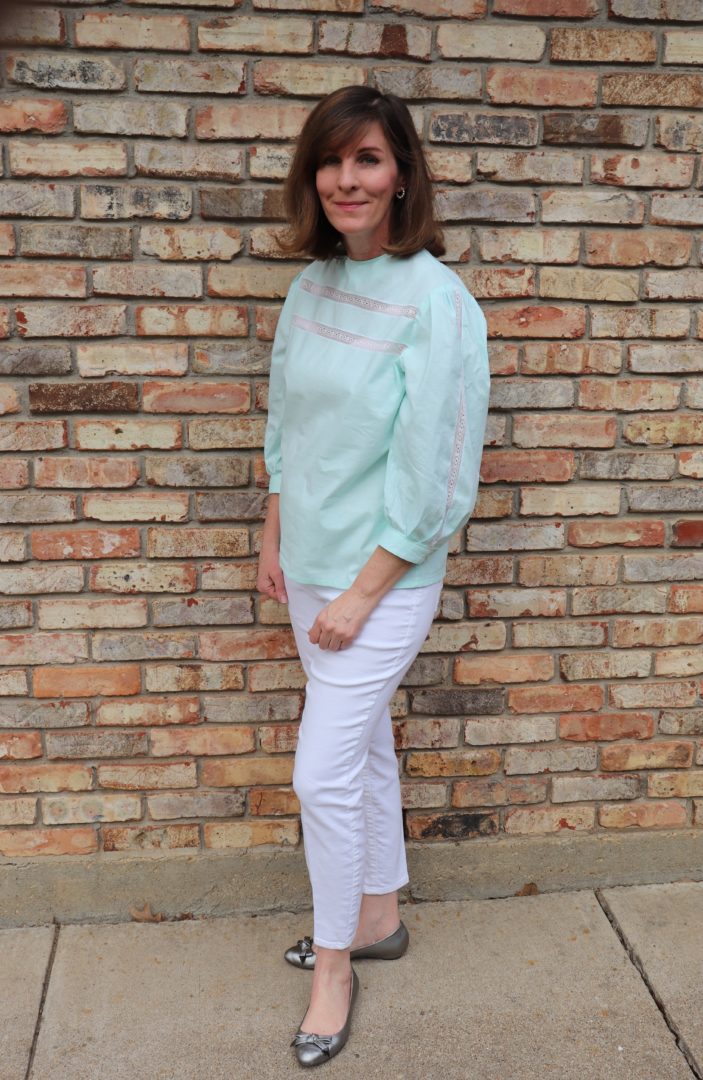
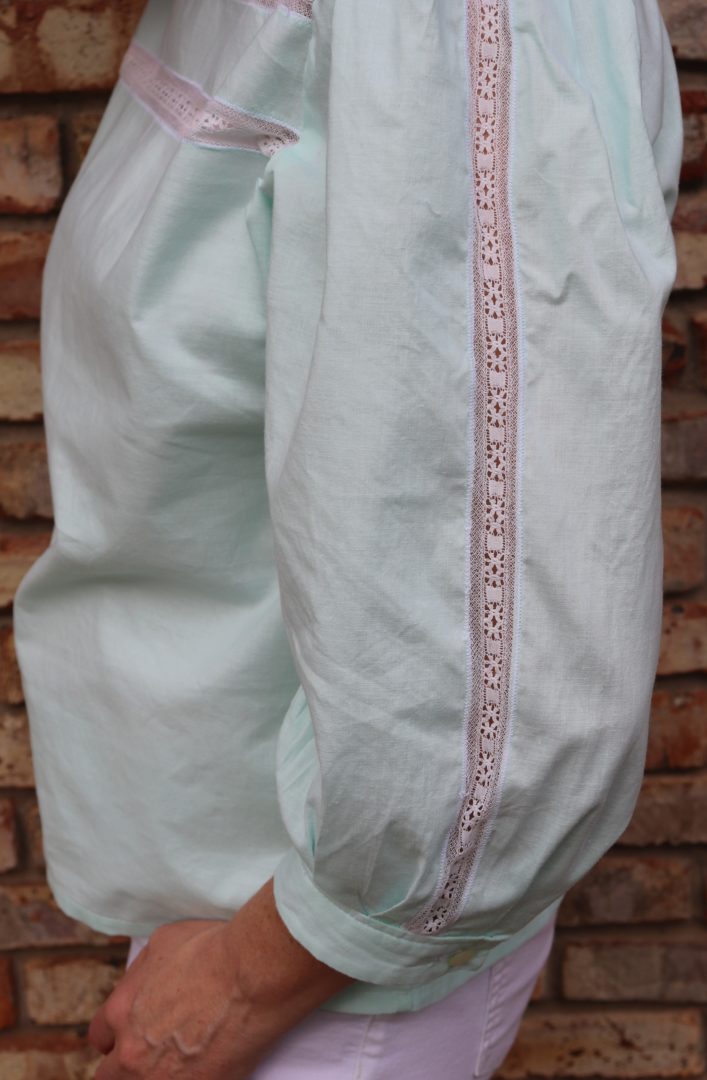
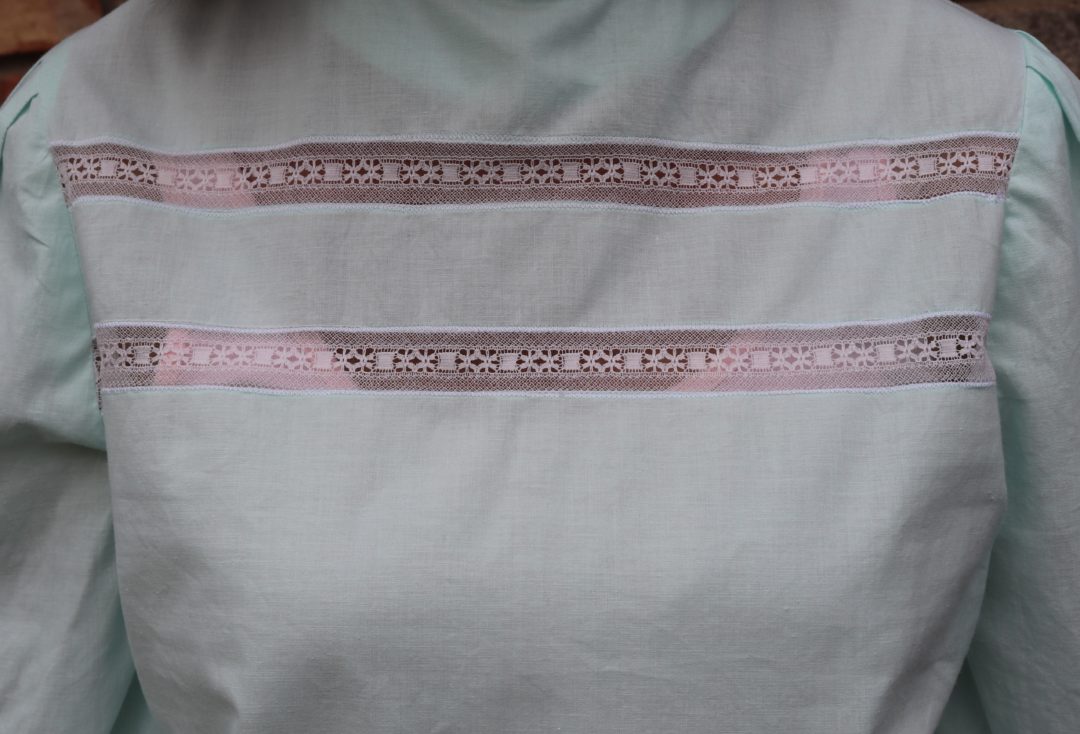

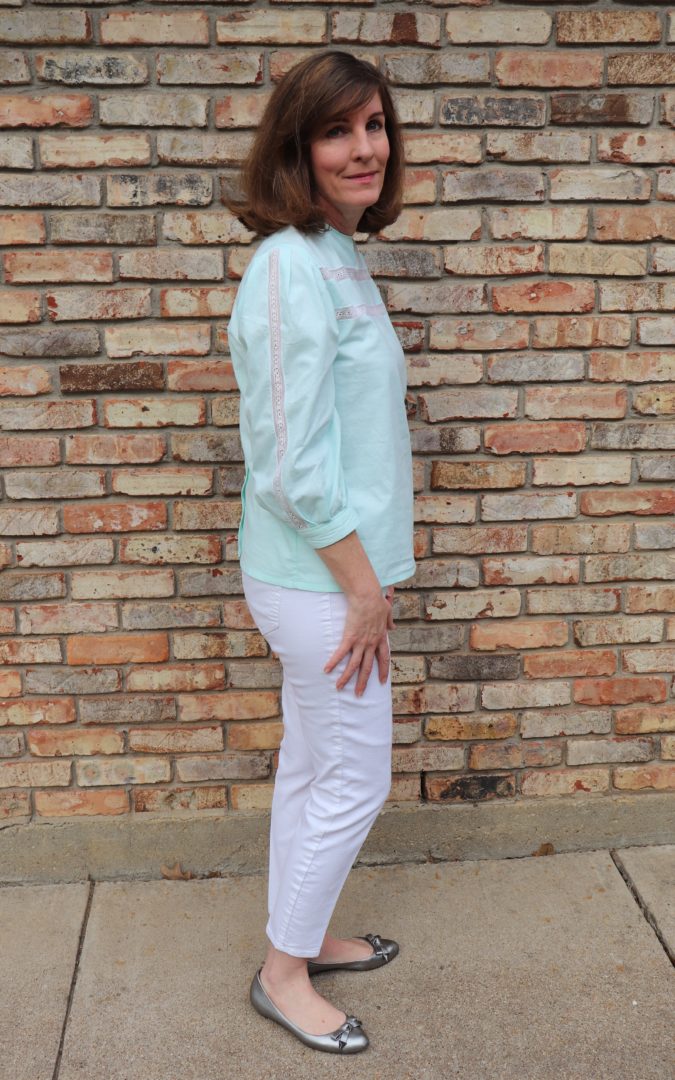
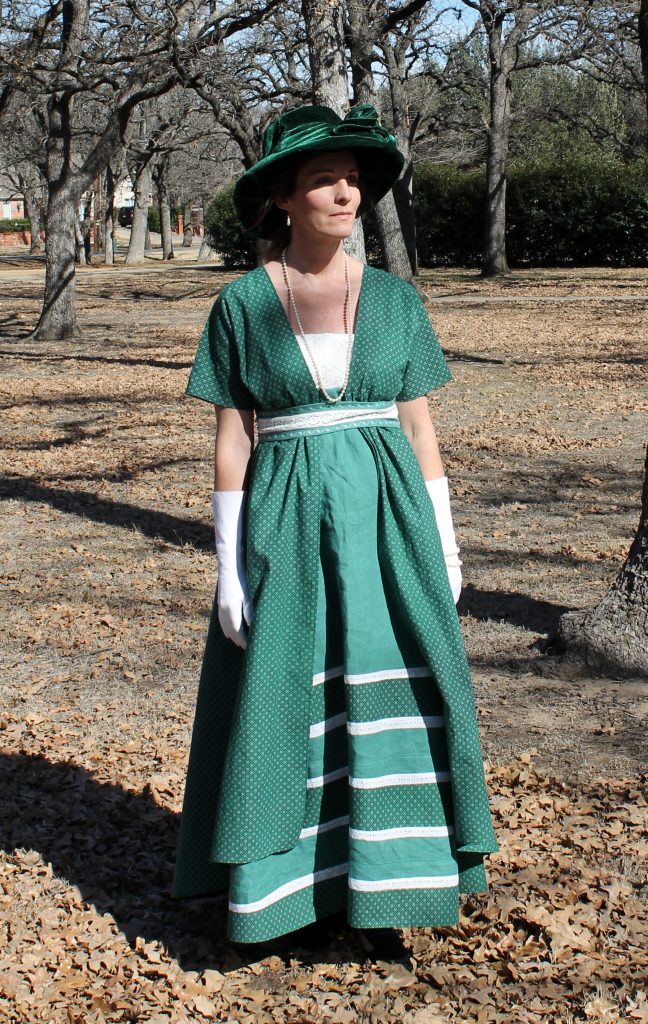
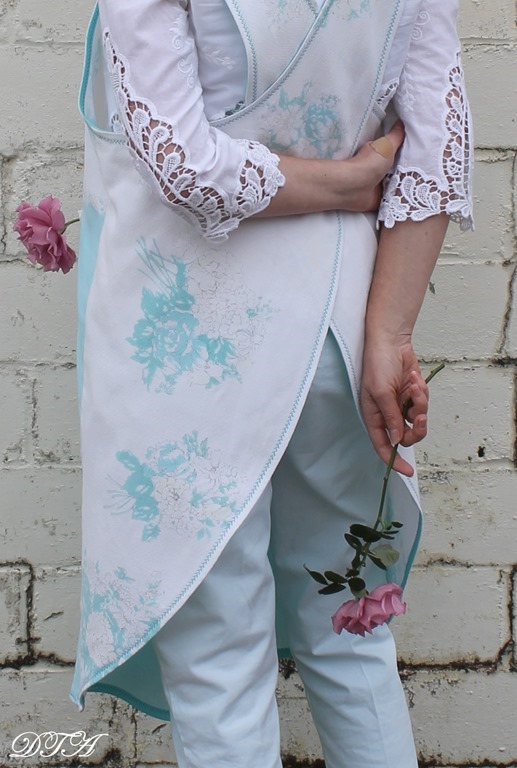
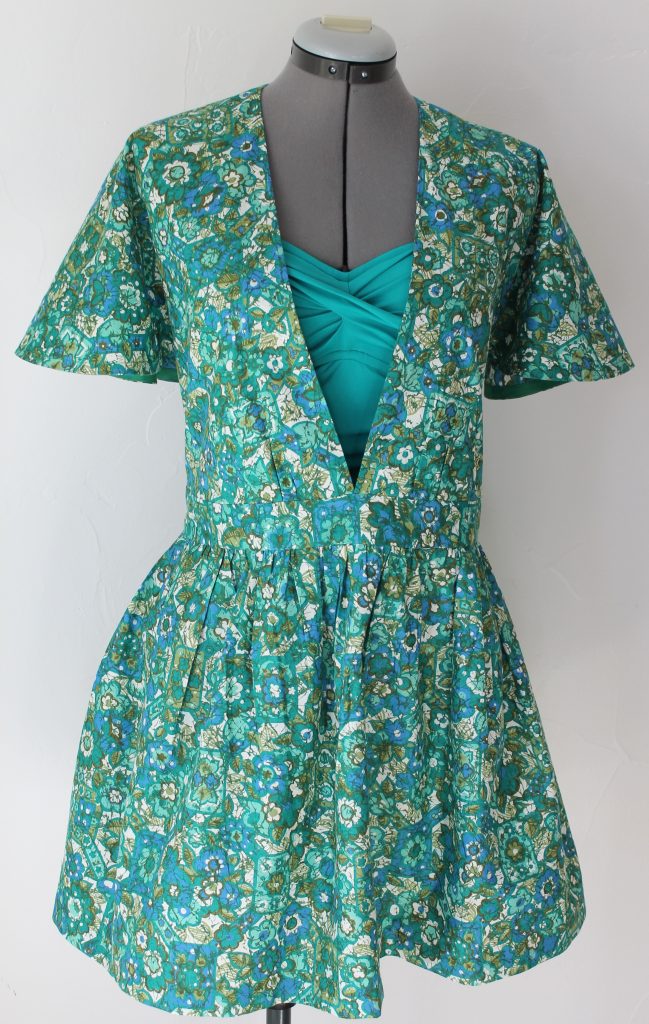
Love the history of the women’s movement. Your outfit is gorgeous. There is something to be said for a woman looking gorgeously put together and modest as well.
Thank you for sharing. Great info, great pics. Inspiration!
That is so cute, and is perfect for wearing in a modern context as well.
I have always wondered how lace insertion was done – afraid I assumed the pattern pieces were cut to be sewn to the lace! Of course cutting out the fabric is more logical.
The Paul Poiret design is very interesting – note the pleating of the underskirt!
Our Girl Scout float for the Lexington MA Patriots’ Day parade is going to be suffrage themed – if it happens! If it does I’ll be showing this to the girls so they can use it as a guide!
I love all your costumes.
I just finished watching Sanditon and I love the costumes.
This is so pretty, Laura, and it looks as perfect for today as it did in the era. I’m so sorry the event was canceled. Certainly understandable but nonetheless, disappointing. I can’t wait to see the full garment. And thanks for the history and other images too!